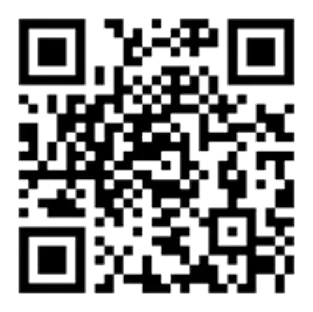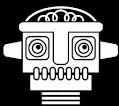Converting Hexadecimal to UTF-16 Format
The code place for this symbol is 128420 (decimal) or 1F5A4 (hexadecimal). This means that the Hex Code for this symbol is 🖤 (This would give you the symbol in HTML, but you need something that will work in JavaScript.)
The key point is that the code place for 🖤 is higher than 0x10000. This means you cannot use the normal JavaScript format u\XXXX (i.e., with four hexadecimal characters) because 1F5A4 has five characters.
To use this character in JavaScript, you must convert it to a format that looks like this u\XXXXu\XXXX. Let's call it the UTF-16 format.
Characters in the Basic Multilingual Plane (BMP)
The most common symbols we use are usually numbered between 0x0000 and 0xFFFF, i.e., they're below 0x10000. (NB: The "0x" prefix tells JavaScript it's a hexadecimal number.)The characters in this range are described as being in the "Basic Multilingual Plane" (BMP). Characters with a code place above 0x10000 are best described as "non-BMP characters." And, we want one of those!
How To Covert to the UTF-16 Format
The first thing to know is that the first four-character hexadecimal number is called the "high surrogate." The second one of the pairing is called the "low surrogate." Together, they are called a "surrogate pair," and they represent one character.Here's the formula for converting a code place above 0x10000 for JavaScript:
| Conversion Method |
|---|
|
let codePlace = 0x1F49C; let highSurrogate = Math.floor((codePlace - 0x10000) / 0x400) + 0xD800; let lowSurrogate = (codePlace - 0x10000) % 0x400 + 0xDC00; |
| Get Hexadecimal String |
|---|
|
let stringOne = highSurrogate.toString(16); let stringTwo = lowSurrogate.toString(16); |
| Creating the Surrogate Pair |
|---|
| let surrogatePair = "\\u"+ stringOne + "\\u" + stringTwo; |
| JavaScript Text | Output |
|---|---|
|
let str = "\uD83D\uDDA4" document.write("My symbol: " + str) |
My symbol: 🖤 |
UTF-16 Calculator
Use this calculator to get the UTF-16 format for your character.
Enter the hex value:
"0x "
"0x "
For Completeness
And, just for completeness, if you need to convert from a hexadecimal string to a number:| Get Numbers from the Hexadecimal String (if needed) |
|---|
|
myFirstNumber = parseInt(stringOne, 16); mySecondNumber = parseInt(stringTwo, 16); |
You might also like...
Send an encrypted message
arrow symbols
special symbols
currency symbols
fractions symbols
Greek-letter symbols
accented-letter symbols
heart symbols
Mathematics symbols
music symbols
punctuation symbols
Help Us Improve Cyber Definitions
- Do you disagree with something on this page?
- Did you spot a typo?
- Do you know a slang term that we've missed?
Share This Page

If you like Cyber Definitions (or this page in particular), please link to it or share it with others. If you do, please tell us. It helps us a lot!
Create a QR Code

Use our handy widget to create a QR code for this page...or any page.
Are today's iKids spoilt brats?
Read about iKidsMore Topics...
emoji library
(send a huge emoji)sex & dating terms
(fine-tune your search)spotting drug abuse
(protect loved ones)saying "I love you"
(learn new ways)encrypting messages
(get sneaky!)gaming terms
(chat like a gamer)spotting grooming
(protect loved ones)numbers in texting
(improve brevity)Spanish slang terms
(get "slangy" in Spanish)using special symbols
(find the codes)coronavirus terms
(remember covidiots)
